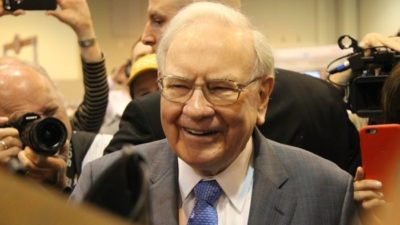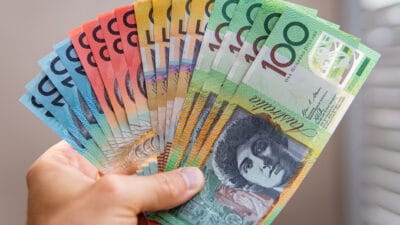Exchange-traded funds (ETFs) are an increasingly popular investment vehicle for investors as we start 2021. In fact, (as we reported at the time), 2020 was one of the best years ever for ETFs, which experienced record inflows.
The most popular ETFs by far with ASX investors are index funds. Index funds are very simple in nature as they methodically track a major index such as the S&P/ASX 200 Index (SAX: XJO). Indexes like these are usually market capitalisation weighted, meaning that the largest companies in the index account for the largest holdings.
As an example, the largest constituent of the iShares Core S&P/ASX 200 ETF (ASX: IOZ) is currently Commonwealth Bank of Australia (ASX: CBA) with an 8.13% weighting. Since CBA is currently the largest company by market cap on the ASX, it's commensurately the largest holding in the index (and IOZ).
Most index funds work in this way. If a company grows in value over time, its weighting in any index that holds it will also grow. That's why Afterpay Ltd (ASX: APT) has the 14th largest weighting in the index right now, even though it wouldn't have been there at all a few years ago.
Equally, if a company falls on foul fortune and decreases in value, it will progressively be moved down the index to reflect this. Fallen agents like AMP Limited (ASX: AMP) now occupy a far smaller space in the ASX 200 than they did in days of yore.
However, not all indexes follow this weighting methodology. There is a different breed of ETFs out there that have a following, known as "equal-weighted ETFs". As the name implies, an equal-weighted ETF does not allocate larger companies a larger piece of the ETF's weighting. Instead, all companies, regardless of size, are treated equally.
Some are more equal than others…
Take the VanEck Vectors Australian Equal Weight ETF (ASX: MVW). Instead of the method described above, this ETF assigns an equal weighting to each constituent. Thus, CBA is equally weighted to Afterpay, or AMP.
This ETF doesn't track the ASX 200, instead holding 101 companies at the current time. That essentially means that each company gets slightly below a 1% weighting each. Now, these holdings can (and will) move around their initial allocation over time. But this is all part of the process. If say Afterpay has a particularly strong month, and doubles to 2% of the ETF's weighting, it will simply be trimmed at the next quarterly rebalancing of the ETF.
MVW isn't the only equal-weighted WTF on the ASX either.
The iShares S&P 500 ETF (ASX: IVV) tracks the US S&P 500 Index (INDEXSP: .INX) in the conventional, market-cap weighted manner. But the BetaShares S&P 500 Equal Weight ETF (ASX: QUS) instead follows an equal-weighting methodology similar to MVW. Ford Motor Company (NYSE: F) will have the same weighting as Apple Inc (NASDAQ: AAPL) and Tesla Inc (NASDAQ: TSLA).
But is equal weight worth the effort?
How do equal weight ETFs stack up?
There are some arguments that carry logic with this one. One for instance, is the common criticism of the ASX 200 has being dominated by 'banks and miners'. Indeed, the Financials and Materials sectors of the ASX 200 together make up almost 50% of the entire index. In MVW's case, this is instead around 36%.
But what of performance?
Well, MVW has returned an average of 11.49% per annum over the past 5 years. In contrast, IOZ has returned an average of 9.88%.
Maybe the shoe doesn't fit every foot. The iShares S&P 500 ETF has returned an average of 14.03% per annum over the past 5 years. In contrast, the BetaShares S&P 500 Equal Weight ETF has returned an average of 9.74% per annum over the same period.
So clearly equal weight works well in some situations but isn't anything close to a 'silver bullet' of higher returns. Its effectiveness may depend on different market, different companies within those markets, or just pure chance.
Before you make a decision on whether equal weighted ETFs are something you want to pursue, make sure you keep fees in mind. As they are most costly to run (and less popular), equal weight ETFs often have higher fees than their market cap cousins. Take MVW – it charges a management fee of 0.35% per annum. IOZ on the other hand charges 0.1%.
It's a similar story with the US ETFs. IVV charges a fee of 0.04%, whereas QUS asks 0.29%. Those fees can make a difference over time, so keep them in mind.








